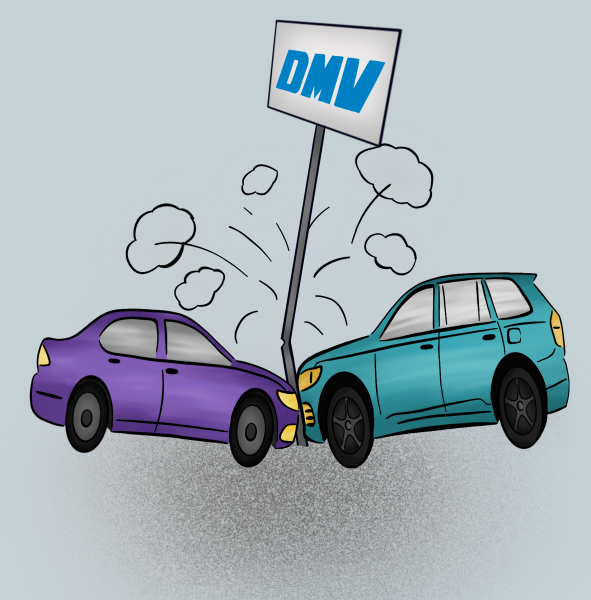Cheap Clothing Comes at High Cost
When the word “fast fashion” is mentioned, the 1st thing that comes to mind is the obvious, possibly over-simplified, definition that has been fed to us by our highly consumerist society.
Fast-fashion (noun)- inexpensive clothing produced rapidly by mass-market retailers in response to the latest trends.
While this term has been a more frequent topic in recent years, I have observed how the negative effects of fast fashion continue to be looked past, time and time again. It seems as though fast fashion has become considered a hypothetical situation — as if something so exploitative is rarely occurring in the advanced world we live in.
The negative impacts that come with fast fashion have been, and will continue to be, very real. Clothing production is the 3rd biggest manufacturing industry after the automotive and technology industries, and the production of textiles contributes more to climate change than international aviation and shipping combined. 93% of fast fashion brands don’t pay their workers a living wage, and 68% of these brands fail to maintain gender equality at production facilities.
So, if the massive effects fast fashion can have on both its workers and the environment have been identified, why does fast fashion still remain such a large part of our society as a whole?
The issue relates to strategic marketing. Brands with questionable morals and statistics somehow manage to make their companies appear trustworthy and valuable. Take, for example, the infamous online retailer Shein.
Shein has practically become the blueprint for fast fashion. Most of its young demographic know that their production takes place in Chinese sweatshops– that isn’t some big secret. But if so many people know of their unethical processes, how are they excelling in the industry?
From what I’ve seen, it all comes down to the price point.
While customers are aware that the quality hands-down won’t be anything close to luxurious, customers continue to buy it. With so much of our lives revolving around material items, it’s safe to say that a large portion of society values quantity over quality. We all want to flaunt our belongings sometimes, but the social media culture that revolves around “back-to-school hauls” or “here’s the 20 items I bought from 1 store alone” definitely isn’t helping.
As a person watches everyone around them showing off their recent purchases, it makes sense why they would want to feel included, too. However, the harsh reality is that for many, particularly youth who don’t have the ability to make money for themselves, the issue of cost is an obstacle. So, items with a sales price in the single-digits can be extremely appealing, marketed as a “steal” for a consumer in search of an enviable wardrobe, but with little money to spare.
These fast-fashion brands know their customer-base, and they aren’t afraid to cater to what they believe these customers will like. This goal to establish a wardrobe without breaking the bank is a logical reason for why fast fashion thrives.
While Shein and other well-known companies have already been established as fast fashion brands, I only recently began to understand that many brands my friends and I happily support are also benefiting from mass production. Unbeknownst to me, Urban Outfitters, Pacsun, and Topshop, to name a few, fall under this distinction.
Freshman Alexis Awad said, “I own a lot of clothes from Urban Outfitters, so it’s definitely upsetting to find out that they [as a brand] aren’t as ethical as I thought. While I know Urban Outfitters will continue to make money and stay popular, it does make me question [the purchases I have made in] the past”.
While these brands have begun to create clothing specifically focusing on using eco-friendly materials, their popularity and large inventories can make it difficult to know exactly which side of the brand you’re supporting. I know for me, it’s difficult to completely let go of a brand I have known and loved for so long, unaware of their problematic practices until looking into it. The fact that I have to do a deep dive on a brand’s production standards speaks to just how secretive the fashion industry can be surrounding fast fashion.
While nobody can reduce their fast fashion consumption completely due to the lack of transparency in the fashion industry and norms put into place, it’s important for us, the consumers, to continue to enforce the hierarchy of morality over saving money when possible. While we don’t have the power to make executive decisions in the fashion industry, we, as consumers, vote with our dollars.
As a society, we need to understand what message we are sending, and its subsequent impacts, each time we complete a transaction.
Your donation will support the student journalists of Campolindo High School's The Claw. Your contribution will allow us to produce more issues and cover our annual website hosting costs.

Freshman Ruthie Stoll is a dancer, tennis player, and foodie. She grew up in a small town in Pennsylvania, moved to the Bay when she was 4, and just graduated...


